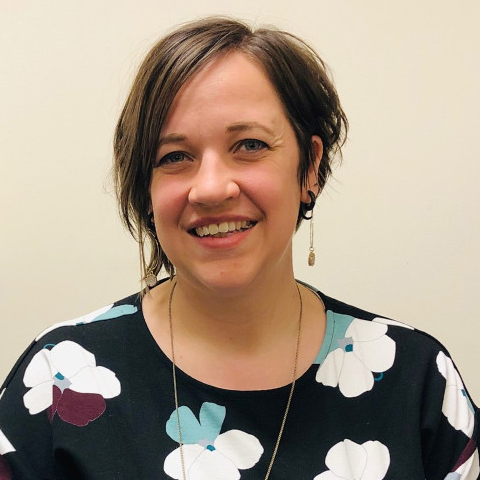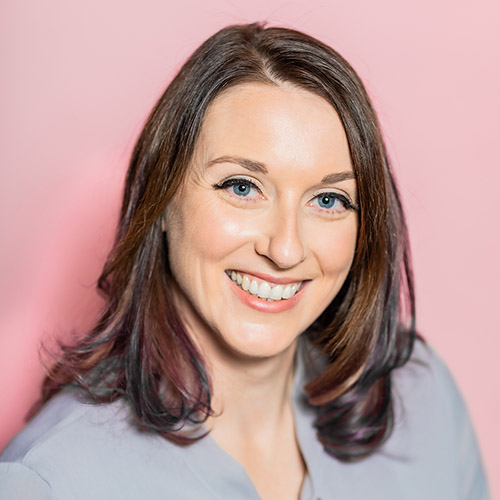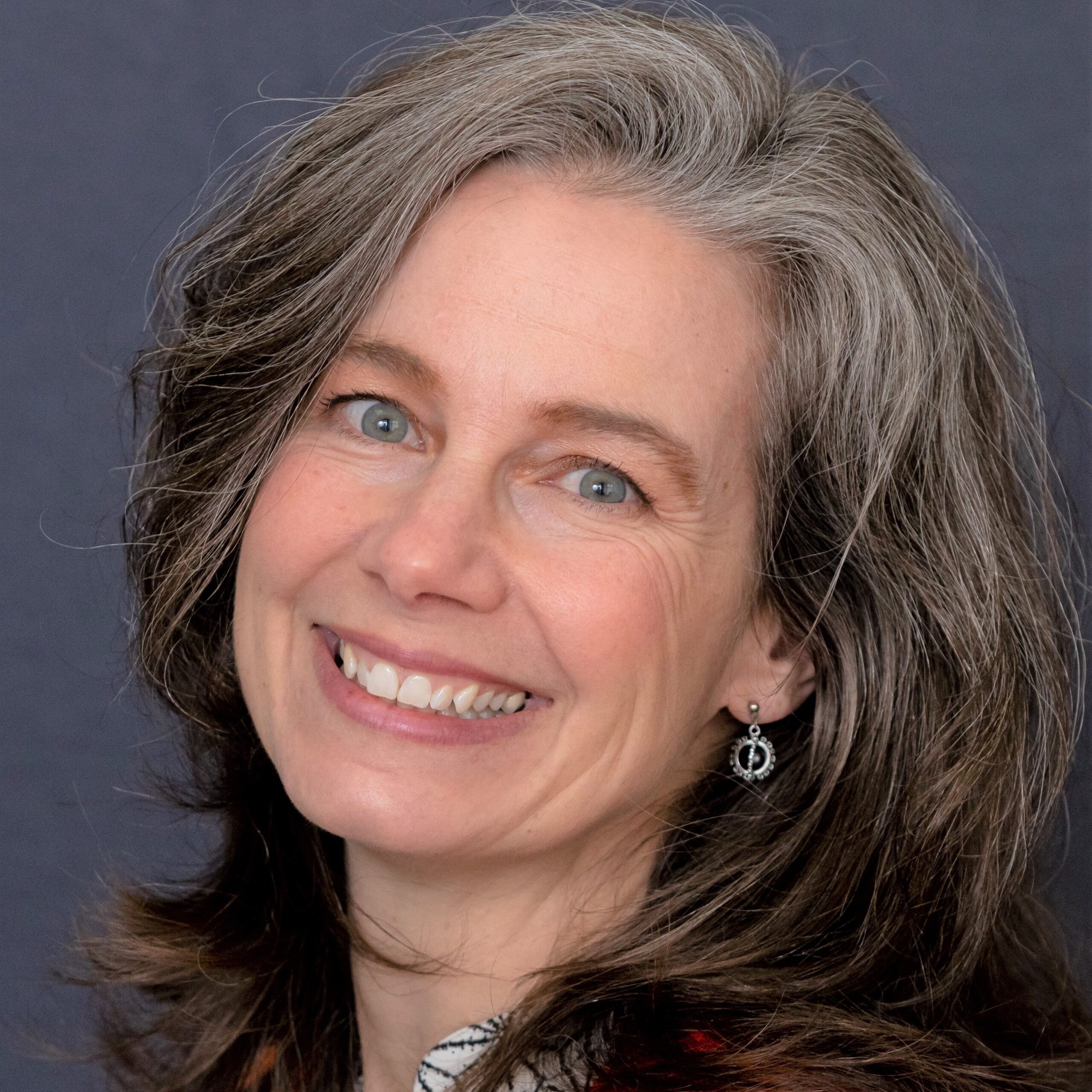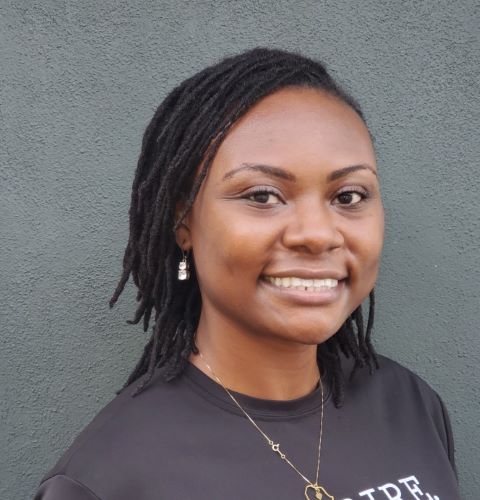The Power of Women in Orthotics and Prosthetics
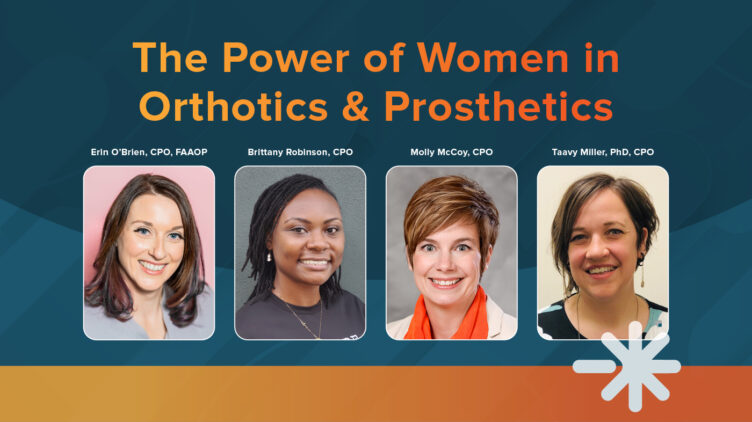
Erin, Brittany, Molly, and Taavy will be the first to say that today they feel respected as female clinicians working in the field of orthotics and prosthetics (O&P). While there has been significant advancement through the years, there is still more we can do to support female clinicians to achieve their professional goals.
In honor of International Women’s Day and Women’s History Month, these four female clinicians gathered together to share their thoughts on what it’s like to be a woman in O&P, the unique contributions they make to the field, how Hanger Clinic supports them and their professional development goals, and their advice to other women considering entering the field.
How did you get into the role of O&P?
Brittany: Originally, I was a medical assistant at a pediatric office, but I wanted to pursue something new. I decided to return to school for nursing. I met an O&P technician who introduced me to the field. Not knowing much about O&P, I went to educational seminars to learn more.
The field of O&P is such a fusion of various career fields. It is chemistry, nursing, research & development, technical skills, psychology, biomechanics, engineering, art, anatomy, physiology, and so on. It was everything an empowered woman could possibly want in a career!
I spent two years finishing residency at the Tampa VA Hospital where I became well rounded in advanced prosthetics, CAD, and patient-centered care. From there, I moved to Washington DC to work for a small prosthetic company where I learned more about the business side of O&P.
I then moved back to Florida and now work for Hanger Clinic. As a woman and a mother, Hanger Clinic has truly supported my career and me as I transitioned to motherhood.
Molly: My high school library had the Encyclopedia of Jobs—books that have all the jobs that you could possibly do. I pulled out the “P” book and opened it up. The page opened to prosthetics and I became interested.
In 1994 when I was first interested in O&P, I went to shadow, and the multiple places I visited thought I was looking for a job as a secretary. They were all male practitioners, and only one said don’t be a secretary. Don’t be a technician. Go to school and be a practitioner because that’s where you will have the longest career. He was the only one who thought it was possible for me to become a practitioner.
Erin: I’ve had similar experiences to Molly. I got into the field through a recommendation of a friend who was in O&P school at the time. I had a biology degree, and I realized very shortly after I got it that you can’t do much with a biology degree. I applied to school for O&P and got in, and it’s been a really good fit for me.
I won’t say that since I started there haven’t been any struggles always feeling welcome in all environments. I think the thing that I’ve seen, especially with recent leadership, is that though we still have a ways to go, the attitudes and intentions have shifted quite a bit and we continue to move in the right direction.
Taavy: My story is a little different. I had a lot of health care exposure as a child. My brother has a developmental disability, and then my grandmother became a bilateral below knee amputee due to diabetes. Both of these experiences exposed me to physical therapy and rehabilitation. When I went to college, I thought I wanted to be a physical therapist.
It was one of my professors who said if you’re interested in O&P, I know someone who works at the Veterans Administration. He sent me over there to get to know them. They were great, and they hired me as an assistant. This experience solidified my path into O&P.
I was accepted at Georgia Tech, and that year was the first year they had nine women and one man in the O&P program. It was pretty impressive, and I felt like we had a really supportive community as female representation in the field was definitely shifting.
Since you began your O&P careers, how has the role of women in this field evolved?
Molly: Back in the day, if you were a female practitioner, you were kind of the odd one out or expected to work with kids. But it has evolved. Now instead of a female practitioner and a male practitioner, we’re all just practitioners.
Brittany: My class was a little bit different because we had half men and half women. Our field is moving that way, and I’m starting to see more women practitioners nowadays. In the past, this field was predominately men. Women are an added asset to the field as we have the ability to provide an extra layer of nurture combined with attention to fine details and structure.
What makes the perspectives of female clinicians unique?
Taavy: I believe women in any workplace bring a different perspective, a different way of seeing the world, and a different type of problem-solving. I think we’re different—complementary but different—than men, whether it’s in business or health care.
Brittany: I used to work in a small practice that consisted of all men. The company sought to diversify as I joined their team. The experience gave me a deeper understanding of why women play such an important role in O&P.
It’s an added benefit to have women and men come together to provide balance and structure and best address a patient’s emotions, mental state, and insecurities. And there are times in the clinic when a patient may feel more comfortable with a clinician of a particular gender, and want to see a female clinician instead of a male.
Erin: I’ve had a similar experience. I have had many female patients who have come in and said, do you know that you’re the first female clinician I’ve ever worked with?They are relieved to know I am there. I understand a little bit more about their body than probably some of my male colleagues might, and they can bring up those issues more comfortably with me.
What traits do female clinicians bring to the table that provide additional value to the patient and care team?
Brittany: Generally, we are more respected as professionals for our nurturing nature and empathy. That is something we bring to the table on top of our knowledge and critical thinking. Additionally, different types of patients react differently to gender, race, or ethnicity, so I think it’s important to have a broad representation.
Nevertheless, it’s about just being human. That’s what I try to bring to the table. I understand that you may have just had an amputation and are going through a lot. I want you to know life is not over. Being empathetic and allowing patients to speak and express themselves makes a huge difference in a person’s rehabilitation.
What growth opportunities are there for female clinicians to get involved in research and leadership?
Taavy: I give all kinds of respect and honor to the women who have come before me and everyone else who helped lead the way.
Beyond clinical care, I see teaching or professional education as an excellent opportunity for women in O&P. This isn’t just teaching at a school. It includes being a subject matter expert and providing clinical professional education from within O&P organizations. While we can participate on research teams without a PhD, earning a doctorate does open up different opportunities within research and leadership.
Erin: One thing I’ve seen change fairly recently, which is really exciting, is that when I first got into the field, there were very few subject matter experts who were women.
Moving up in a company and growing your career wasn’t something that seemed very possible. I didn’t have any role models for that, but it’s getting better. What I’ve come to realize is that I somehow get to be that role model for the women who are coming into O&P now. Though this is intimidating, it’s also really exciting. There’s a place for strong women in clinical leadership, and that’s really exciting to me.
How has Hanger Clinic demonstrated being a champion for women in O&P?
Brittany: Coming here and having my opinions heard and actually being able to implement my ideas has been very rewarding. I like being able to express myself and have people accepting of women in managerial or supervisor roles.
When it comes to Hanger Clinic, I’ve been able to showcase my leadership skills and can see that there’s an opportunity for growth. If you want to move and try new things, you can do that, which is nice because nobody wants to stay stagnant.
Hanger Clinic also brings so much to the table when it comes to knowledge. We discuss company goals, leadership, diversity, and continuing education that makes me feel empowered as a woman to become an improved version of myself.
Taavy: I appreciate the women and leadership groups Hanger Clinic supports, and the initiatives promoting diversity and inclusion within our organization. I hope we continue to see more of this. Also, Hanger Clinic is an organization that has been supporting initiatives in clinical and scientific affairs and education, and that is amazing.
Molly: My goal is to advance my career to higher levels of management. My supervisor is very proactive in helping me find opportunities, sharing them with me, and letting me decide which ones I want to pursue. I appreciate the support in advancing my career in the direction I want to go.
How do you advocate for yourself professionally?
Erin: I think men tend to do a better job advocating for themselves. I think we have to teach women to say what they want. But by being an amazing clinician, you have a space to make those changes. It might just be locally within your own clinic to start, but will eventually spread beyond, too.
Taavy: As women, we have to be taught to say this is what we want now. We have to put it out there. That’s what I want to see more women thinking about. To advocate for myself, I keep working on myself professionally, building my personal network, pursuing continual professional training or CEUs to keep my skills up-to-date, and participating in regional or national organizations on committees that are doing work that matters to me.
In closing, what do you wish for women in the O&P industry?
Taavy: I just want everyone, starting in school, to see the opportunities they have. As a clinician, there are so many things you can start mapping out and thinking about as you grow professionally. This can include honing specific technical skills, specializing in certain populations, or starting to teach locally to referral sources or at the university level. I would love to see more women in research, on boards or in committee positions, and leading within our clinical and professional organizations.
Erin: Yes, there’s always room for growth within the clinic space, but it might be different for everyone. It may be building a better transfemoral socket, balancing life with work, the way that you interface with your patients to make things less stressful, or even fostering a more open and diverse workspace for the people you work with.
It’s really understanding that there are many different ways things can get better, but it takes all of us at an individual level to start working on that, and then it grows from there.
Interested in advancing your career in O&P?
If you or someone you know is looking to advance their career in O&P, look for opportunities at a Hanger Clinic near you.
Latest Updates
Subscribe to stay up-to-date on our latest posts.
